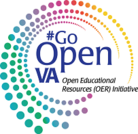
Unrestricted Use
CC BY
This text provides links to up-to-date resources on how to properly attribute OER within your own creations, as well as how to create your own attribution to include in your materials as a helpful guide to others.
- Subject:
- Professional Learning
- Material Type:
- Reading
- Author:
- #GoOpenVA Administrator
- Date Added:
- 05/22/2020